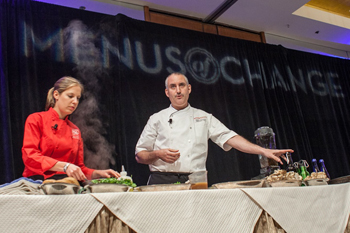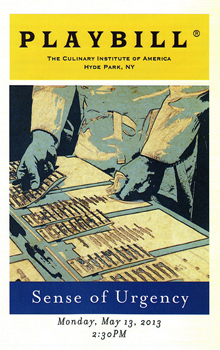A GPS to the Future of Food
Tuesday, 30 July 2013 19:15
 At the inaugural Menus of Change™ summit co-presented by the CIA in June, experts in foodservice, health science and social change presented information on topics relevant to what today’s health- and environmentally conscious consumers expect from corporations, foodservice operators and business leaders.
At the inaugural Menus of Change™ summit co-presented by the CIA in June, experts in foodservice, health science and social change presented information on topics relevant to what today’s health- and environmentally conscious consumers expect from corporations, foodservice operators and business leaders.
Attendees at the inaugural Menus of Change™ leadership summit, which opened June 10 in Cambridge, Mass., are examining the future of food and the challenges facing our country in terms of health, healthcare and our food systems.
Co-presented by The Culinary Institute of America and Harvard School of Public Health (HSPH), Department of Nutrition, the Menus of Change program and accompanying annual report (www.menusofchange.org) provide a “GPS” for today's foodservice executives at a time when the food industry is being reshaped by concerns about obesity and healthcare costs, how food is produced and sourced, and declining global resources.
“It has been exciting to see the leaders from different sectors—foodservice, the environment, nutrition science and business—interact with such drive and commitment,” says Dr. Tim Ryan, CMC, president of the CIA. “Menus of Change is helping them find common ground at the intersection of some of the most pervasive issues that face our industry and our world, and we are setting a meaningful course of action toward solutions.”

 Emmi Roth USA announces winners of the Grand Cru® Recipe Contest for culinary students, held in conjunction with CAFÉ.
Emmi Roth USA announces winners of the Grand Cru® Recipe Contest for culinary students, held in conjunction with CAFÉ. Courtesy of Olson Communications
Courtesy of Olson Communications The iconic chef led top staff, purveyors and protégés in Sense of Urgency.
The iconic chef led top staff, purveyors and protégés in Sense of Urgency.